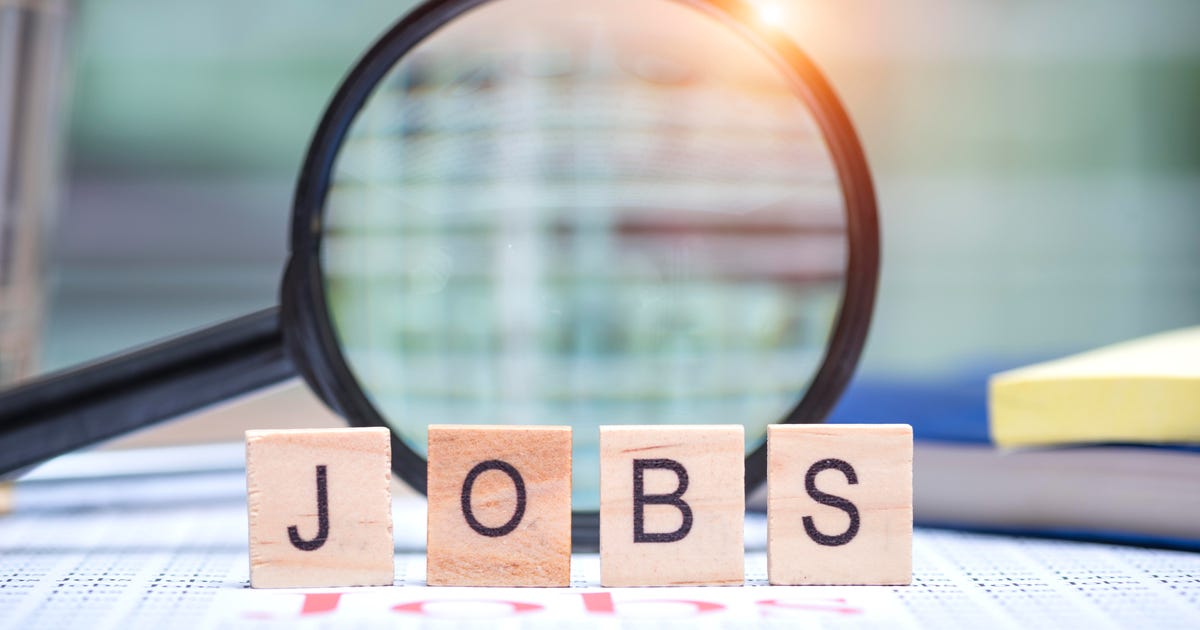
This story is part of Recession Help Desk, CNET’s coverage of how to make smart money moves in an uncertain economy.
What’s happening
The job market appears to be holding with a 3.5% unemployment rate, but more layoffs are happening.
Why it matters
If the Federal Reserve continues to raise interest rates to slow the economy, we may face a recession, prompting more businesses to downsize or shutter.
What it means for you
Knowing the factors driving the job market now can help you decide your next career and money moves.
Earlier this summer, during a live television interview, a news anchor asked me point-blank if we could have a recession with such a low unemployment rate.
Being quick on my feet, I said, “That’s a good question,” and deflected by talking about the state of inflation. (I’m such a pro.)
Many key indicators suggest the economy is on the verge of a recession, including high inflation, a drop in consumer sentiment, a volatile stock market, rising interest rates and a tight housing market for both buyers and renters. The latest monthly jobs report is still at odds with those figures, with the unemployment rate dipping slightly to 3.5%, which is a pre-pandemic low. Nonetheless, layoffs are starting to become more widespread. And if you ask most Americans, they’ll tell you a downturn is already here.
That question from the news anchor puzzled me for days. It speaks to how perplexing the US economy is at this moment, even for someone like me, who’s been covering personal finance for over two decades.
I went searching for answers. Here’s what I learned about recession fears, interest rate hikes, layoffs and more employment-related questions.
I’m hearing about more layoffs and hiring freezes. Is the unemployment rate still low?
News about layoffs is definitely trending. Job losses are primarily concentrated in the tech, mortgage and housing industries, which have slowed considerably due to a drop in consumer spending or rising interest rates. In recent weeks, major companies, including Wayfair, Apple and Walmart, have announced downsizing and cutbacks.
And still, across the spectrum, the number of job openings is almost double the number of unemployed job seekers. In June, there were 10.7 million jobs available, with widespread job growth. Recorded layoffs have remained steady, between 1.3 million and 1.4 million each month since the beginning of 2022.
That could change, of course, and there are signals that the job market is cooling a bit. Filings for unemployment benefits have been going up, recently reaching their highest level this year.
It may just take longer for the unemployment rate to catch up to other lagging data points we’re seeing at the moment. “The labor market is one of the last indicators to show real stress,” said Liz Young, head of investment strategy for SoFi.
Many big employers earned record profits during the pandemic, providing them with a larger buffer than in previous business cycles to absorb inflation or a slowdown in spending, Young pointed out. Additionally, companies will first try other cost-saving measures like reducing spending on marketing and hiring freezes. “They’re going to try to cut costs when they can before having to lay off the workforce,” she said.
How do interest rate hikes weigh on the job market?
When the Federal Reserve raises interest rates, as it has several times since the start of the year, borrowing becomes more expensive for everyone, including businesses relying on credit financing to grow. When the cost to carry debt jumps, businesses may decide to reduce operating costs — that is, cutting staff — to afford the higher interest burden.
In short, steeper interest rates can lead to more financial challenges for business owners, which can then lead to layoffs and higher levels of unemployment.
I took time out of the workforce during the pandemic. How good are my job prospects?
Certain industries are hiring more than others but, generally, this is a job-seeker’s market. Leisure and hospitality, professional and business services and healthcare added most of the jobs in July.
If you’re a woman, it’s not surprising that you took time out of the workforce during the pandemic. Employers should understand gaps on resumes dating back to 2020. More women lost their jobs that year than men: Between January and December of 2020, 2.1 million women left the labor force, nearly half of whom were Black and Latina, based on an analysis by The National Women’s Law Center.
And although some women are still struggling to return due to family constraints and difficulties with work-life balance, a promising new paper suggests that women have made quite a comeback. In her research for the Brookings Institution, Lauren Bauer, a fellow in economic studies, discovered that women between the ages of 25 and 44, most with a college degree, had returned to their pre-COVID labor participation levels.
“There is something to be said for women taking the past couple of years on the chin and not accepting that this was going to change the trajectory of their lives,” Bauer told me. Given how hard their lives have been, they’ve been “much more proactive about staying on track for themselves and their children in a way we couldn’t have predicted.”
Can I ask for a raise in these uncertain times?
This depends on the financial health of your company, but given the fact that there are so many job openings compared to job-seeking applicants, the power could be tilted a bit more toward workers.
“My guesstimate is that wages have some momentum and that … workers still do have a fair amount of bargaining power,” says Jesse Rothstein, professor of public policy and economics at the University of California, Berkeley.
About half of workers say they’ve received a pay bump in the last year, although it’s not been enough in the face of inflation.
Here’s my take: Rather than worry about the uncertainty in the economy, focus on the financial health of your company to gauge whether making more money would be possible this year. If your company implemented a hiring freeze or has cut back on expenses, this may be a precarious time to ask for a raise. On the other hand, if your employer has had a profitable 2022 so far (you can look up the earnings reports if it’s a public company or ask a colleague in finance or accounting for insights), this may be a ripe opportunity to petition for a salary bump.
Read more: Is Now a Good Time to Ask for a Raise?
If I get laid off, how long will it take to find a new job?
The average amount of time that someone was collecting unemployment insurance in June was 22 weeks. In theory, that means some job seekers were able to find new employment in about four and a half months. Still, this is an imperfect measure since some job seekers are cut off from jobless benefits before they’ve landed a new job. Experts say many long-term unemployed workers are undercounted in official employment numbers.
How should I prepare for a potential layoff?
Focus on the decisions that are within your control, including communicating with your employer now about how you can continue to help add more value, productivity and possibly revenue in these tricky times. Mind your own personal finances by saving and paying off high-interest debt, reviewing your goals and doing your best to create security in both good times and bad.
Can there be a recession if the job market is relatively healthy?
The National Bureau of Economic Research makes the official call of a recession, taking into account the health of the job market in addition to other economic indicators, such as retail sales, industrial production and personal income growth. Historically, the most severe recessions have been marked by widespread layoffs and cyclical unemployment, which is a slump in hiring demand.
Nonetheless, deciding if, when or how the recession will play out is not the best use of someone’s time. “I think this is mostly a semantic argument,” said Rothstein.
Alas, this is what I wish I’d said on the television appearance. I did better the second time around.

